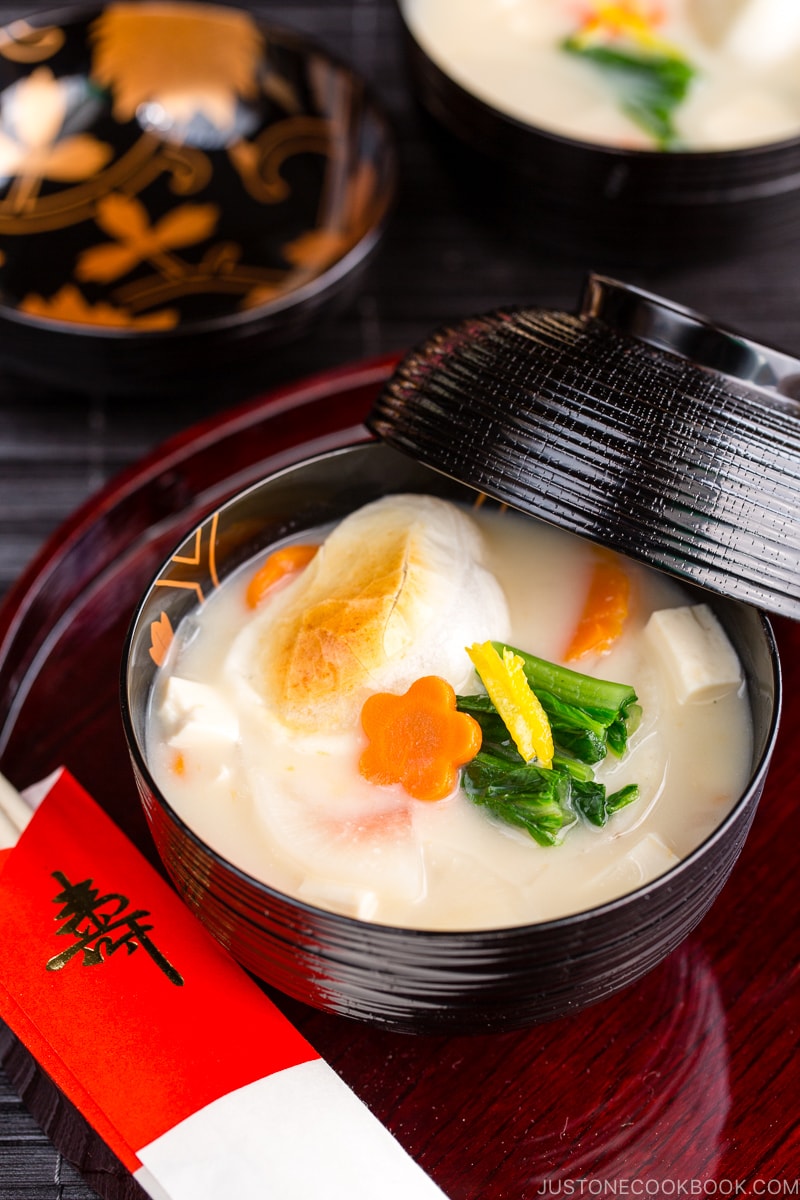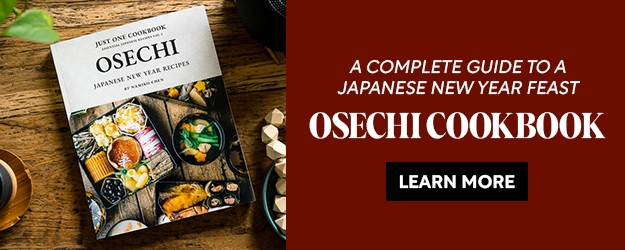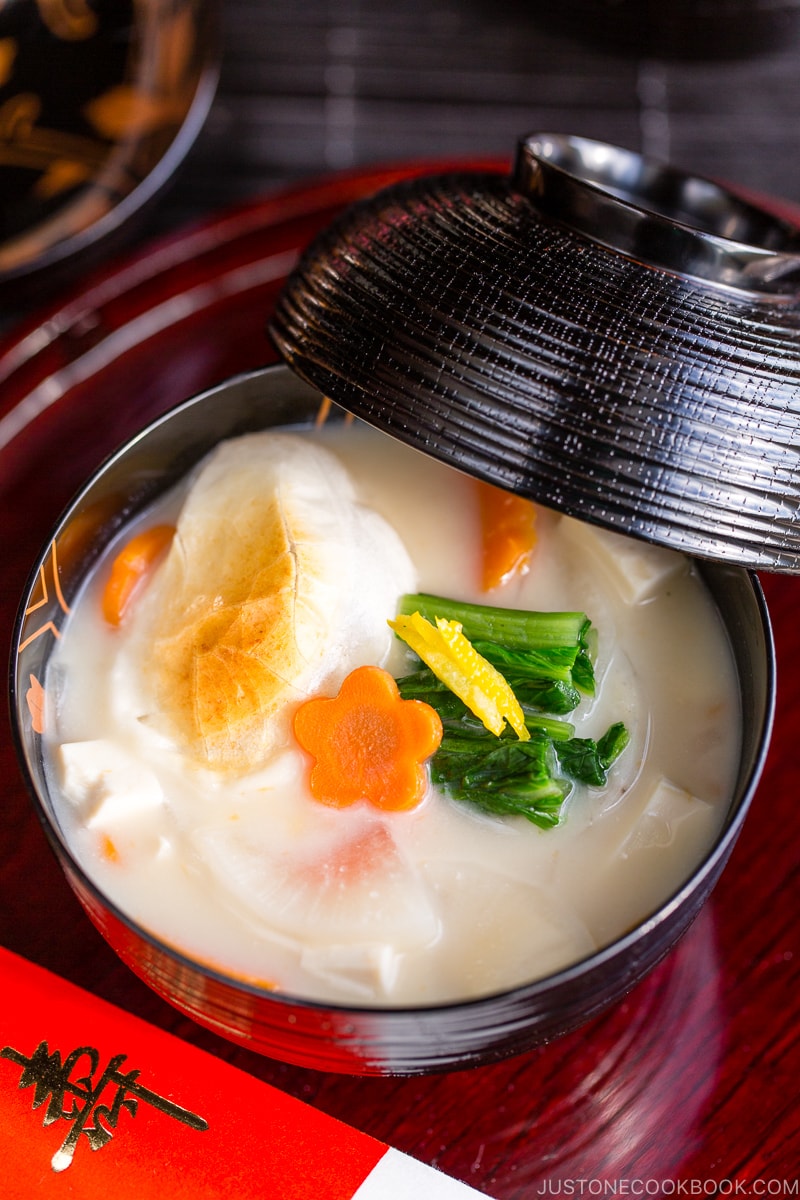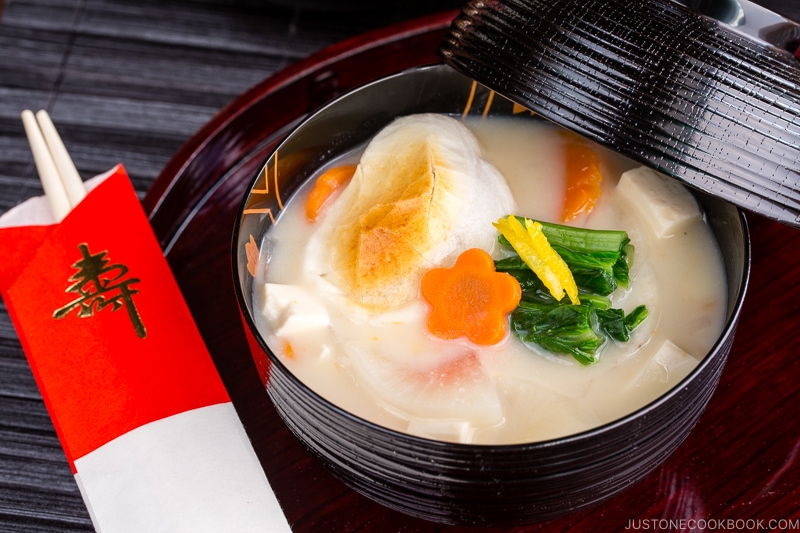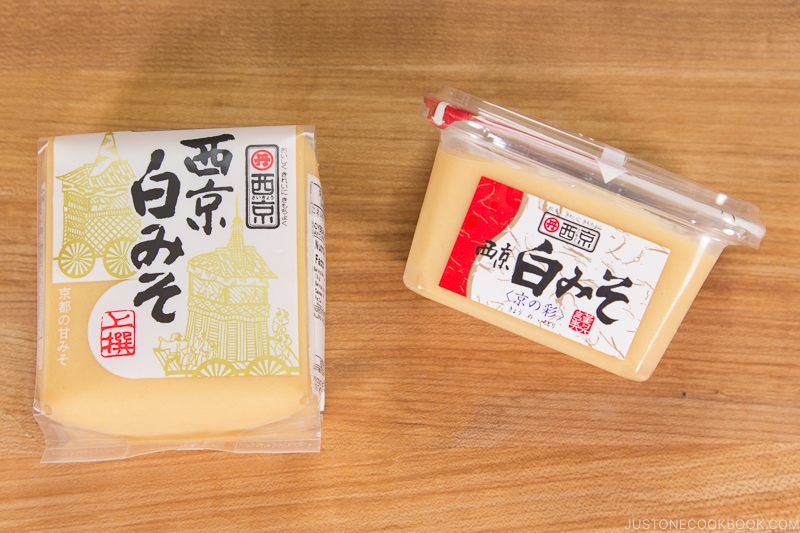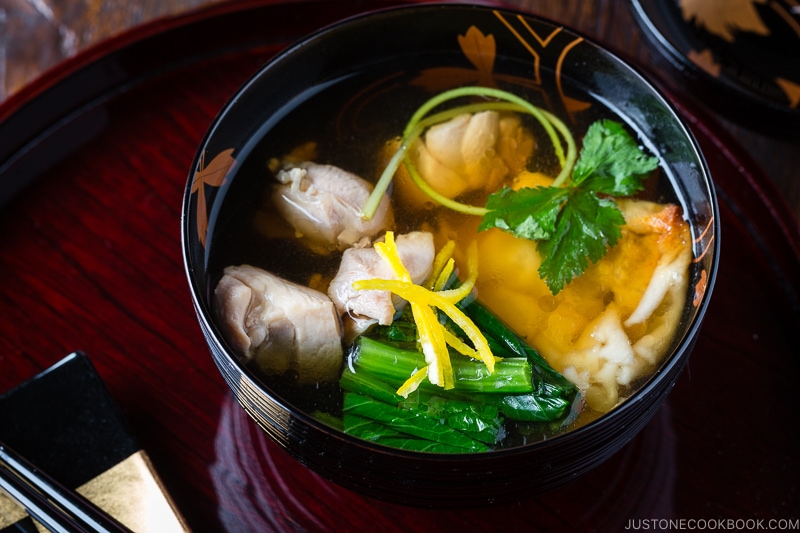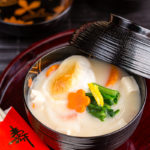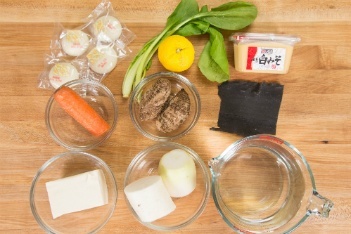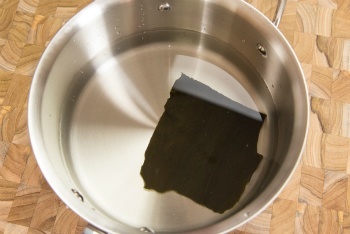The Japanese celebrate the New Year by feasting on Osechi Ryori (お節料理), traditional Japanese New Year food packed in lacquered boxes along with this special mochi soup called Ozoni (お雑煮).
What is Ozoni?
Ozoni is a special soup that we eat in the morning on New Year’s Day in Japan. It usually includes mochi (rice cake) and the preparation varies by household and region. There are numerous regional variations in Japan but we usually divide into two types – the Kanto (Tokyo area) style and the Kansai (Kyoto area) style. Ozoni Soup
The Kanto, Chugoku, and Kyushu regions: a clear miso soup flavored with bonito-based dashi and soy sauce. The Kansai and Shikoku regions: white miso is added to the kombu base dashi soup. Some areas in Tottori prefecture: the azuki red bean soup with round mochi.
Mochi
The Kanto region: a rectangular-shaped mochi is grilled/toasted before being added to the soup. The Kansai region: a round-shaped mochi is cooked in boiling water before being added to the soup.
Over 400 years ago, round mochi was commonly used throughout Japan. However, as more people started to live in the Tokyo area, it was too much work to make the mochi into a round shape by hand. Therefore big mochi cake was cut into small squares and they became the common shape in the Kanto region. Ingredients in Ozoni
The Kanto style: chicken, fish cakes, dried shiitake, carrot, and some leafy vegetables like komatsuna, spinach, or mitsuba are often included in the soup and garnished with yuzu peel. The Kansai style: ozoni, satoimo (taro root), daikon, and carrot are the common ingredients and are often garnished with katsuobushi (bonito flakes) on top. Others: Some regions close to the ocean include fish and seafood, while mountain regions use vegetables and mushrooms. The additions to the soup vary based on the regional and seasonal ingredients.
My Family’s Ozoni
As I mentioned earlier, this new year’s soup not only varies by region but also by each household. My mother lived in Osaka before she moved to Tokyo for college. Her mother’s family was originally from Kyoto and her dad’s family was from Nara. Therefore, my mom’s family grew up eating Kansai-style Ozoni. On the other hand, my dad grew up in Tokyo eating Kanto-style Ozoni till he met my mom. So, my mom’s ozoni is a mix of both, with the Kansai-style base. It includes 5 ingredients: satoimo (taro root), daikon, Kyoto-style carrot (it’s red more than orange), toasted round mochi, and tofu. She uses Saikyo Miso (white miso from Kyoto). For my version, I add leafy green vegetables (komatsuna or spinach) and yuzu peel, both of which are the common ingredients for Kanto-style ozoni. The green color added to the soup makes it prettier and I also like to add the fragrance of yuzu peel if I am lucky enough to get fresh yuzu. My children didn’t like ozoni when they were little, but now they love the Kansai-style and I’m so excited that we can enjoy this traditional food as a family.
How to Make Kansai-style Mochi Soup
The Ingredients You’ll Need
kombu (dried kelp) taro (satoimo) daikon radish carrot komatsuna or spinach Saikyo miso (Kyoto-style white miso) – more about this below. soft/silken tofu round mochi (rice cake)
The Cooking Steps
Soak the kombu for a minimum of 20–30 minutes or overnight in water to make Cold Brew Kombu Dashi. Cut the vegetables (taro, daikon, and carrot) according to the instructions. Cook the vegetables in the cold brew kombu dashi until they are tender. Add more water if too much liquid has evaporated. Blanch komatsuna until tender in a separate saucepan. Cut the cooked komatsuna into smaller pieces. Set aside. Prepare yuzu zest (optional). When the vegetables are cooked, dissolve Saikyo miso into the soup. Cut the soft/silken tofu into small cubes and gently add them to the soup without breaking it. Reheat the soup until it is just hot, turn off the heat, and keep it covered. Place the round mochi (rice cake) directly on the rack of a toaster oven and toast until puffy. You can also toast the mochi over an open flame, under a broiler, or in a frying pan. Serve the soup in individual serving bowls. Add one piece of toasted mochi on top of the soup in each bowl. Serve immediately with the colorful toppings on the side.
Saikyo Miso in Kansai-style Ozoni
If you are new to Saikyo Miso (西京味噌), it’s different from regular white miso and it’s naturally sweet. The sweet flavor is similar to amazake (甘酒). This sweetness comes from the sugar produced through the fermentation process. Saikyo miso is made in Kyoto and it’s usually more expensive than regular miso. You might have tasted this special miso if you had fish called Gindara Saikyo Yaki (or known as Miso Cod here in the US). You can find saikyo miso in a Japanese supermarket.
Kanto-style Ozoni
People in the Tokyo area enjoy mochi soup with a clear broth. If you’re interested in Kanto-style Ozoni with white miso, check out the video and recipe with step-by-step pictures. Wish to learn more about Japanese cooking? Sign up for our free newsletter to receive cooking tips & recipe updates! And stay in touch with me on Facebook, Pinterest, YouTube, and Instagram. Editor’s Note: This post was originally published on December 28, 2014. It’s been republished on December 24, 2023.
